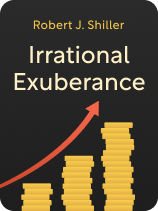

This article is an excerpt from the Shortform book guide to "Irrational Exuberance" by Robert J. Shiller. Shortform has the world's best summaries and analyses of books you should be reading.
Like this article? Sign up for a free trial here.
What causes stock market speculation? How do psychological anchors influence investors?
Stock market speculation is influenced by psychological anchors, both quantitative and moral, which ground an investor’s decisions even more than recent news about company performance. Taking a look at how these anchors work gives insight into why certain stocks grow and when.
Let’s take a look at how quantitative and moral psychological anchors and how they influence stock investors.
Psychological Anchors that Influence Speculative Bubbles
Stock market speculation and psychological anchors are deeply intertwined. While many things can cause speculative bubbles, psychological factors determine the extent to which these bubbles will grow. In particular, two types of psychological anchors—quantitative and moral—prevent speculative bubbles from growing indefinitely.
1. Quantitative Anchors
Quantitative anchors cause investors to keep stock prices relatively stable on a day-to-day basis. To illustrate the concept of quantitative anchors, let’s take a look at an experiment by Daniel Kahneman and Amos Tversky, in which they asked participants a question with an answer between 1 and 100 while displaying a wheel of fortune that landed on a random number between 1 and 100. Participants’ answers, they found, were heavily influenced by the wheel’s number—for instance, if participants were asked “What percentage of Americans earn above $50k annually?”, their answers were significantly higher if the wheel landed on 85 than if it landed on 35. The number before them thus anchored their response.
(Shortform note: Since Kahneman and Tversky’s original experiment, the impact of quantitative anchors has been repeatedly and robustly confirmed by researchers. For instance, in a later experiment, researchers asked participants to list the last two digits of their social security number before asking them how much they would pay for a given object (like a bottle of scotch or a box of chocolates). They found that individuals with higher social security numbers consistently gave larger values when asked what they’d be willing to pay, thus showing that their social security number anchored their response.)
This phenomenon keeps stock prices mostly consistent on a day-to-day basis. For example, if Tesla stock is trading at $245, investors will likely be anchored by this number and therefore avoid driving the price up to (say) $300 in a single day. In practice, this means that quantitative anchors restrict speculative bubbles from rising (or falling) excessively in a short time span.
(Shortform note: Although quantitative anchors can be a powerful tool for keeping stock prices stable, they’re often outweighed by news concerning business fundamentals. For example, on February 3, 2022, Meta’s stock dropped 26% from about $325 to about $240 after a disappointing earnings report, costing Meta $232 billion of its market capitalization.)
2. Moral Anchors
In a similar vein, moral anchors determine how far a speculative bubble can grow before bursting. Moral anchors refer to the narratives and reasons that convince investors to keep their money invested in the stock market rather than selling their stocks and cashing out. When a moral anchor is weak, investors will be more likely to sell their stocks and earn a tangible profit, causing a bubble to burst when this selling is widespread. By contrast, when a moral anchor is strong, investors will be more likely to hold their stocks and thus perpetuate speculative bubbles.
(Shortform note: While moral anchors explain why investors continue to hold their stocks when they’ve made money in the stock market, a different factor explains why investors continue to hold their stocks when they’ve lost money—namely, the belief that losses aren’t real until you cash out. For example, if you invested $5,000 in Netflix and its stock immediately dropped 20%, you might refuse to sell your holdings because the $1,000 loss only feels genuine after you’ve cashed out.)
Let’s compare the narratives that drive investment decisions to those that influence juries. Psychological experiments show that rather than assessing the quantitative evidence that the defendant committed a crime, juries instead consider the plausibility and coherence of the defendant’s story versus the prosecution’s. Analogously, these reasons—rather than quantitative analysis of dividend yields or CAPE ratios—heavily influence investors’ behavior. For instance, if you initially purchased tech stocks in the late ’90s and earned massive returns, you might choose to continue holding these stocks rather than selling if the dominant narrative says that tech stocks will only increase in value.
(Shortform note: For investors seeking to improve their quantitative analysis skills rather than simply relying on the dominant narratives in financial circles, Robert G. Hagstrom’s The Warren Buffett Way offers a helpful starting point. In The Warren Buffett Way, Hagstrom outlines the key quantitative metrics that Warren Buffett uses to evaluate companies’ prospects as an investor. For instance, he outlines what return on equity is and how it measures companies’ efficiency in generating prospects, in addition to explaining why owner earnings is a superior metric to cash flow.)

———End of Preview———
Like what you just read? Read the rest of the world's best book summary and analysis of Robert J. Shiller's "Irrational Exuberance" at Shortform.
Here's what you'll find in our full Irrational Exuberance summary:
- That financial markets are rife with speculation
- The three key US financial markets where speculative bubbles have formed
- Recommendations to financial leaders and the public for mitigating bubbles






